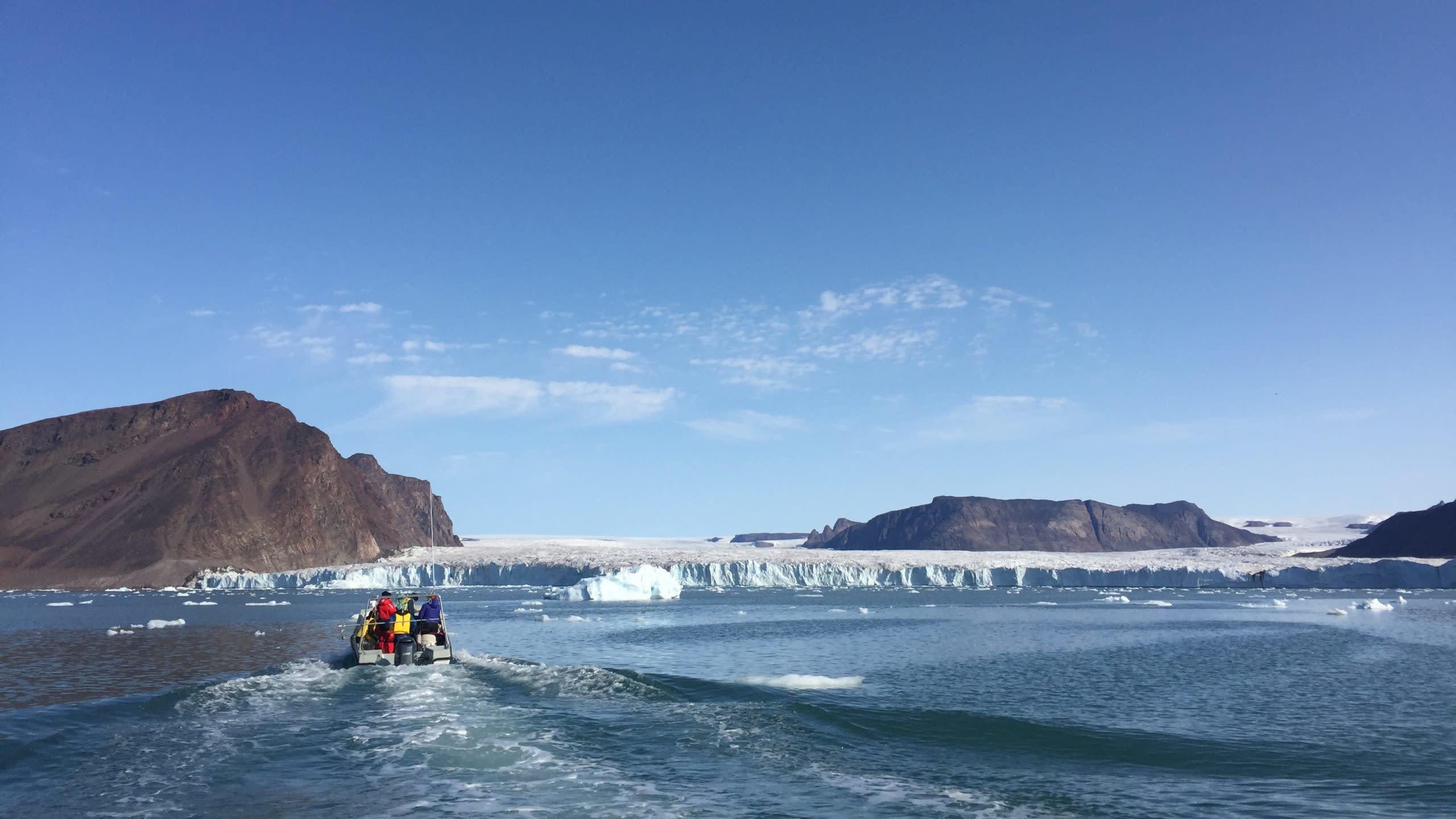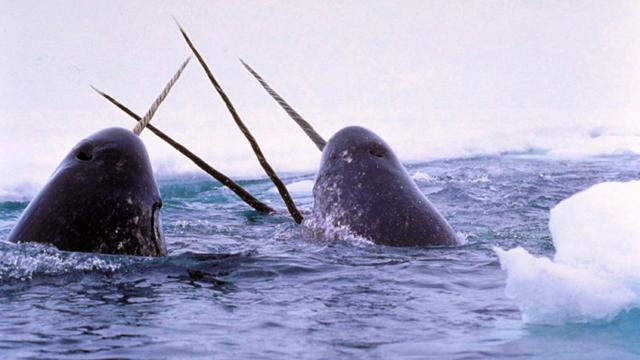Marine biologists, with help from Inuit whalers, have assembled an unprecedented collection of narwhal vocalisations, offering fresh insights into the behaviours of these near-mythical creatures.
Narwhals, the so-called unicorns of the sea, are notoriously difficult to study owing to their skittish nature and uncongenial habitats. Normally, narwhals are found deep below the Arctic Ocean surface, but they summer off the coasts of northern Canada and Greenland.
For the marine biologists who wish to study these creatures, this presents a bit of a problem, as narwhals tend to loiter around dangerous glacial fjords. Scientists who are willing to brave these hostile environments are often met with frustration, as the sounds of motorboats frighten the shy aquatic mammals away.
This partly explains why scientists have struggled to capture the various sounds made by narwhals. Perhaps surprisingly, these animals live in one of the “noisiest soundscapes in the ocean,” as it’s described by the authors of a new study published this week in the AGU’s Journal of Geophysical Research: Oceans. Glaciers are really noisy, producing all sorts of groans and moans as the massive walls of ice inch toward and collapse into the ocean.
This is a shame, because vocalisations are an effective way to study these and other marine mammals. As the researchers explained in their paper, the “high susceptibility of the narwhal to climate change highlights the need for further efforts to document baseline descriptions of the sounds it produces, especially given the potential anthropogenic impacts on their habitats.”
To that end, the authors of the paper, Evgeny Podolskiy and Shin Sugiyama from Hokkaido University in Sapporo, Japan, set out on an expedition in July 2019 to record narwhals summering in Arctic glacial fjords in northwest Greenland. Podolskiy and Sugiyama were assisted by Inuit whalers, who abide by hunting quotas issued by the Canada/Greenland Joint Commission on the Conservation and Management of Narwhal and Beluga. Departing from the village of Qaanaaq, the whalers were able to get very close to the narwhals, as the scientists explained in the paper:
[We] analysed measurements acquired from either a whale hunter boat or from a small boat piloted by a local guide. This data acquisition approach was chosen since local Inuit hunters are generally knowledgeable about the area and the narwhal’s behaviour and are usually able to detect the presence of an animal much faster than a nonlocal. They first spotted the narwhal with binoculars or the naked eye, then shut down the engine, waited, and quietly moved off in a kayak, hoping to get close enough to the occasionally resurfacing whale to harpoon it in the traditional way.
This approach allowed for recordings, made by microphones dropped into the water, at distances approaching 25 meters (24.99 m) from the narwhals.
The various calls, buzzing noises, clicks, and whistles provided the researchers with a baseline for the types of sounds made by narwhals in this particular environment. Roughly 17 hours of recordings were collected during the expedition at Inglefield Bredning and Bowdoin Fjords. These recordings are already contributing to our understanding of these remarkable creatures.

In addition to social calls, which sounded like pulsed-tones and whistles, the researchers were able to identify narwhal foraging sounds, namely their echolocation clicks. Like dolphins, narwhals increase the frequency of their clicks as they get closer to their prey, culminating in a “terminal buzz” which sounds more like a drone than a series of discrete clicks.
“If you approach and target these fast fish, you better know precisely where they are,” said Podolskiy in an AGU press release.
The new research shows that narwhals forage for food in their summer habitat, which wasn’t obvious before.
As the new research also points out, narwhals get closer to encroaching glaciers than presumed, sometimes as close as 1 kilometre away (2 km). In addition to being very noisy, calving icebergs are also dangerous, with large chunks of ice falling and plunging through the surface.
“There is so much cracking due to ice fracturing and bubbles melting out… it’s like a fizzy drink underwater,” Podolskiy said. “It seems we are dealing with animals living in one of the most noisy environments without having much trouble with that.”
Some narwhal sounds, like previously undocumented double-clicks, could not be tied to a behaviour and were possibly acoustic artifacts. Also, the exact behavioural reasons for pulsed calls and click bursts still need to be sorted out, according to the authors. So more work is needed, but that’s expected, as narwhals remain one of the more enigmatic creatures on this planet.
